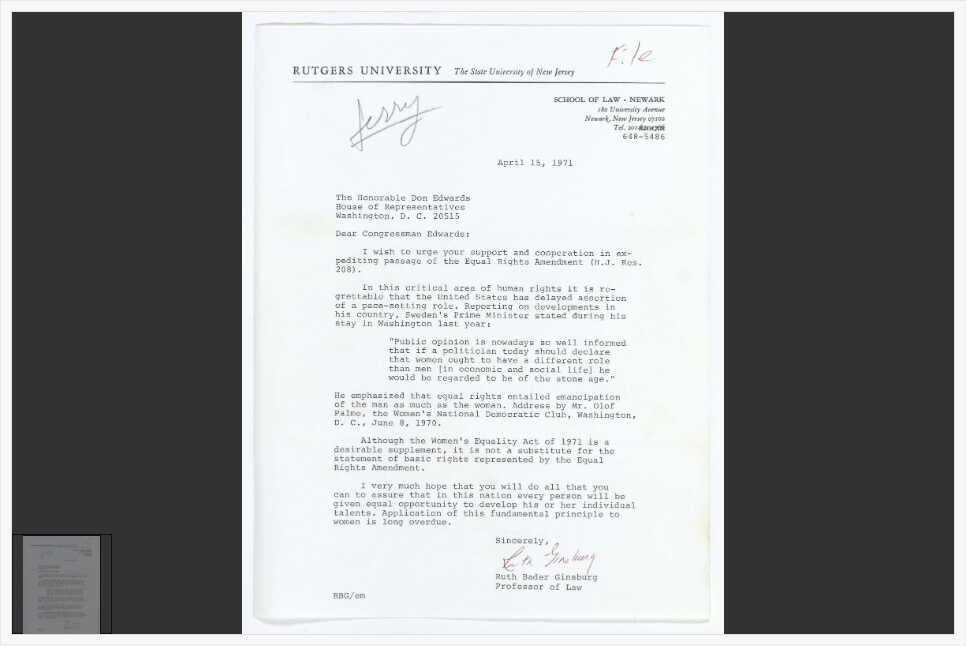Analyzing a Letter from Ruth Bader Ginsburg
Analyzing Documents

About this Activity
- Created by:National Archives Education Team
- Historical Era:Postwar United States (1945 to early 1970s)
- Thinking Skill:Historical Analysis & Interpretation
- Bloom's Taxonomy:Analyzing
- Grade Level:Middle School
In this activity, students will carefully analyze a letter from law professor, and future Supreme Court Justice, Ruth Bader Ginsburg to Representative Don Edwards, the chairman of the Judiciary Committee's subcommittee on civil and constitutional rights.
https://www.docsteach.org/activities/student/analyzing-a-letter-from-ruth-bader-ginsburg



